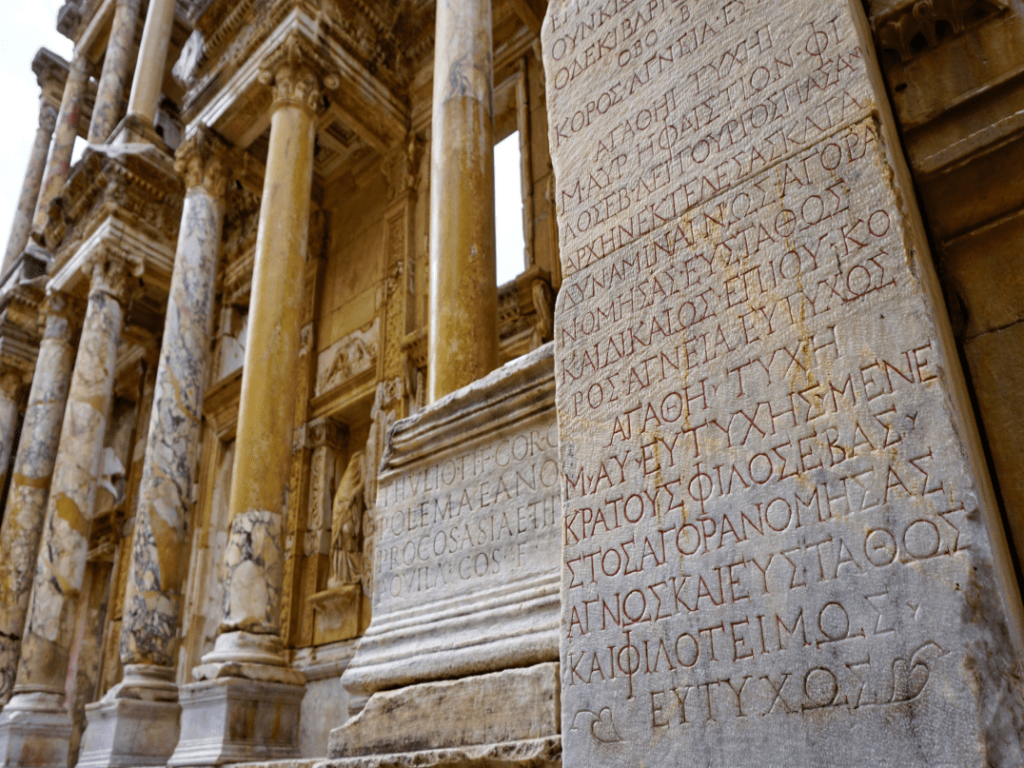Prior to the Tower of Babel event known as the “confusion of tongues” (confusio linguarum), religious scholars and historians believe that the world only spoke one language. Whether this is true or not is not known for certain. However, what linguists are sure of is the fact that thousands of languages have come into existence. And it all started with the creation of that first language. Quite a few of those have been lost to time for one reason or another. On the other hand, there are some languages that have survived for millennia and are still be used today. As a result, we’ve compiled this list of the oldest languages in the world, ranked from oldest to youngest.
Sanskrit – 5000 years old
Not only the oldest language in India, but also thought to be the world’s oldest language. Sanskrit is the millennia-old Indian language. It stopped being commonly used around 600 B.C but has survived until today as a liturgical language. It is found in the sacred writings of Hinduism, Buddhism and Jainism. In fact, the first record of Sanskrit was found to be written somewhere around 5,000 years ago. It and can be found in the collection of Vedic Sanskrit hymns known as the Rigveda. Some research has also suggested that Sanskrit help in forming many European languages. It’s also still one of India’s official tongues today.
Tamil – 5000 years old
Spoken by 78 million people, Tamil is the oldest living language in the world. It is the official tongues of India, Sri Lanka and Singapore. Tamil is the only ancient language that has survived all the way to the modern world. Tamil, part of the Dravidian family of languages, is the most widely spoken language in the state of Tamil Nadu. Inscriptions there date back to the 3rd century B.C.
Egyptian Coptic – 5000 years old
Egypt is widely known to be one of the world’s oldest civilizations, the oldest indigenous language is Egyptian Coptic. Records in Egyptian Coptic date back to nearly 5,000 years. In fact, some 3,200 years later, Egyptian Coptic was still the most widely spoken dialect in Egypt. It was not until the late 17th century A.D. post-Muslim invasion that it was replaced by Egyptian Arabic. You can still find Egyptian Coptic fluently spoken by a handful of Egyptians today. However, it’s primarily used as the liturgical language of the Coptic Church in Egypt.
Lithuanian – 5000 years old
Modern German, Italian and English were born out of Lithuanian. It is part of the group of the Indo-European languages closely related to Sanskrit, Latin and Ancient Greek. It has far better kept its original sounds and grammar rules than any of the other languages on our list. Protected by special institutions and linguistic laws, Lithuanian is the official language of the Republic of Lithuania and the European Union.
Greek – 2900 years old
Greece and what is now a part of modern Turkey first spoke it. Currently, more than 15 million people speak Greek, mostly in Greece and Cyprus. However, there are some Greek-speaking communities in other countries such as the United States and Australia. For over 3,000 years Greek has an uninterrupted history as a written language. This is divided into three stages – Ancient Greek, Medieval Greek and Modern Greek. This period is longer than any other Indo-European language spoken today.
Farsi – 2500 years old
The direct descendent of Old Persian, Farsi is the language of modern day Afghanistan, Iran and Tajikistan. What we know today as Modern Persian came about around 800 A.D., and it has changed very little since. Modern speakers of Farsi could pick up a piece of writing from 1,110 years ago and read it more easily than an English speaker could read the English texts of Shakespeare’s time, for example.
Basque – 2200 years old
Only a few people living in Spain and France speak Basque. This is a language that is related to neither French nor Spanish, nor any other language in the world for that matter. Though linguists have studied Basque for hundreds of years, they’re still unsure until now about where exactly the language came from. One thing’s for sure, however – it’s been around much longer than any of Europe’s Romance languages. Also, it managed to survive through centuries in its own little part of the world.
Irish Gaelic – 1500 years old
Whether you call it Irish Gaelic, Gaelic, Erse, or simply Irish, the language has 2,029,642 speakers around the world. Originating from Bronze Age Celtic, Gaelic has a literary tradition that can be traced back to the Ogham stones of the 5th and 6th century A.D. In addition, Irish Gaelic is related to Manx, Scottish Gaelic, Welsh, Cornish and Breton languages.
Arabic – 1500 years old
Often called the language of the Quran, Arabic is therefore also considered a sacred language. It emerged sometime between the 1st to 4th centuries A.D. Around 420 million people speak Arabic. Arabic has many dialects. Also, it is the origin of languages like Urdu and Malay. Some of our favorite English words like sugar, algebra, alcohol, and emir come from Arabic.
If you would like to carry on the tradition of learning one of the oldest languages in the world by starting to learn Arabic skills on your own, why not try our Kaleela Arabic learning app? Researchers agree that Arabic learning apps are the best way to learn Arabic and Arabic dialects, and there’s no better app available to help you learn Arabic the right way like the Kaleela Arabic learning app. Visit our website and find out how you can download our Arabic learning app to your iOS or Android mobile device and start to learn to speak Arabic today.
Kaleela – Learn Arabic the Right Way!




